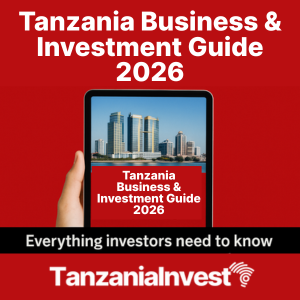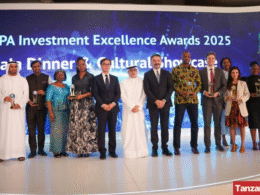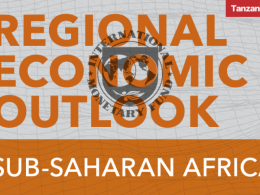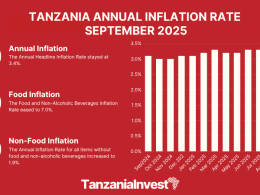The African Development Bank (AfDB) has released its African Economic Outlook 2020 report, estimating that Tanzania’s real GDP grew by 6.8% in 2019.
The real GDP growth in 2018 was estimated at 7%, but in the previous report of 2019, it was initially estimated at 6.7%.
In 2019, Africa’s GDP grew by and estimated 3.4%, and East Africa maintained its lead as the continent’s fastest-growing region with an estimated growth of 5%, with Rwanda, Ethiopia, and Tanzania leading.
Tanzania remains a markedly diversified economy, characterized by robust private consumption, substantial public spending, strong investment growth, and an upturn in exports underpinned the positive outlook.
Tourism, mining, services, construction, agriculture, and manufacturing remain the most notable economic sectors.
Poverty, inequality, and youth unemployment persist despite recent robust growth. Poverty declined, but at a slower pace of 6.4% between 2012 and 2018 than the 18.0% between 2007 and 2012.
The fiscal deficit, financed mainly by concessional external debt, stood at 2.0% of GDP in 2019, up from 1.3% in 2018. External public debt—63% of it concessional—constituted 70.4% of total public debt in 2019.
The current account deficit slightly widened to 3.4% of GDP in 2019 from 3.3% in 2018.
Early signs of slow but steady structural transformation in key sectors include the continued shift of labor from agriculture to services, and even to industry.
Employment in agriculture declined from 71.4% of total employment in 2008 to 66.3% in 2018, while employment in industry increased to 7.1% from 5.7% and employment in services to 26.6% from 22.9%.
Factor productivity is generally low, particularly in agriculture, where its growth averaged only 0.4% between 2015 and 2017. Tanzania lacks access to the development finance required to bridge the enormous infrastructure gap that comes with its size.
Government policy improving the business and investment climate remains a work in progress, particularly in tax policy and administration, access to affordable finance, and government processes
Tanzania Economic Outlook
According to the AfDB the medium-term outlook is positive, growth is projected to be broadly stable at 6.4% in 2020, and 6.6% in 2021, subject to favorable weather, prudent fiscal management, mitigation of financial sector vulnerabilities, and implementation of reforms to improve the business environment.
The fiscal deficit is projected to stabilize at 1.9% in 2020 and 2.2% in 2021.
Key challenges in the medium and long term include low total factor productivity growth, a substantial infrastructure deficit, considerable poverty, and a skill mismatch in the labor market.










